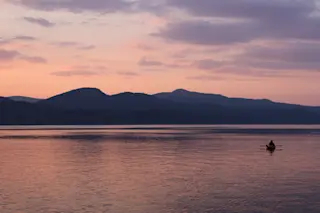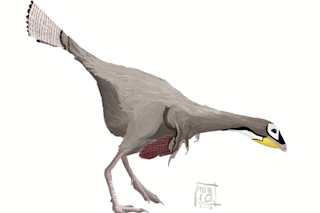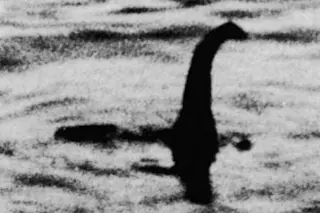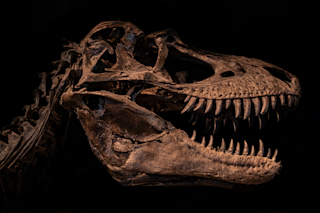Champlain is a very deep, spectacular hundred-mile-long lake that runs north and south between the states of Vermont and New York and reaches into the province of Quebec. In addition to its natural beauty, three treasures are said to be hidden beneath its blue water.
The first is a gift from the bootleggers for whom Lake Champlain was a major thoroughfare during the Prohibition era of the 1920s and ’30s. Filling small boats with Canadian whiskey, the bootleggers would motor down from Quebec through the Inland Sea, or Northeast Arm, section of the lake, past the Champlain Islands. Larger, faster U.S. patrol boats would often lie in wait. The bootleggers would counter by speeding west toward North Hero Island, lightening their boats by tossing the evidence—the liquor—overboard, and escaping to the Carry, a North Hero portage just a few feet wide that divides the Northeast Arm from the Broad, or main lake, to the west. The bootleggers could lift their smaller boats over the Carry and escape from the feds into the Broad Lake.
Today one can eat lunch in the Birdland restaurant, which abuts the Carry, look out into the Inland Sea, and think of all the liquor on the bottom of the lake, which can be 400 feet deep in spots. So much whiskey. So deep. It brings a tear to the eye.
But that’s not the treasure most tourists and residents seek in Lake Champlain. They’re looking for something nonpotable, 15 to 30 feet in length, with dark skin, a snakelike head, and two horns. What more than 300 people say they have seen is more interesting than bootleg whiskey (though they may have been drinking some)—namely, Champ, the Lake Champlain monster.
Joseph Zarzynski, a seventh-grade American history teacher in Saratoga Springs, New York, and an amateur shipwreck hunter, is the expert on Champ. The author of Champ: Beyond the Legend, he searched for the monster for about 20 years, until the mid-1990s, doing what he calls his best work in 1987 and 1988, when he sought Champ with side-scan sonar and an underwater robot.
The definitive thing to have is a carcass, says Zarzynski, who admits that he has never found anything. However, he has cataloged over 300 sightings, which convince him that there’s a large, strange animal in the lake. Some of the sightings are hard to take: About fifty feet long, flowing red mane, dinner-plate eyes, mooselike antlers, elephant ears or a lizardlike long-necked animal with four legs and feet, a forked tongue; emits a hissing noise.
Throwing out the least credible sightings, a consensus appears: an animal with a snakelike body 25 to 30 feet long, with two or three humps above the waterline. The reports come from sea captains, ministers, doctors, a high school principal, a state trooper, a historian. Fifty-eight passengers celebrating a fiftieth wedding anniversary aboard the ship Spirit of Ethan Allen reported that a creature 30 to 35 feet long with three to five humps cruised with the boat about 200 feet off the port side for five minutes before making a 90-degree turn and diving. Don’t tell me it was a carp or a sturgeon, skipper Michael Shea insists. If it was a fish, it weighed 3,000 or 5,000 pounds. Passenger Bette Morris, of Grand Isle, Vermont, concurred: And we hadn’t been drinking all that much at the time, either.
The first recorded sighting of Champ dates back to July 1609, when Samuel de Champlain claimed he saw a 20-foot serpent thick as a barrel and a head like a horse. Champlain also discovered the lake that bears his name, and the existence of Lake Champlain has since been well verified. Samuel is batting at least one for two.
As for the monster, the Rosetta stone of Champology is the now-famous Mansi photograph. In July 1977, Sandra Mansi, of Connecticut, was showing her fiancé, Anthony, around the Northeast Arm, near the town of St. Albans, on the northern Vermont shore of the lake. Her two children were wading in the shallows when what Mansi described as a dinosaur breached the surface about 150 feet offshore. Anthony rescued the children from the water while Sandra fired off a shot with a Kodak Instamatic. She estimated that the dinosaur’s head and neck stuck six feet above the water, and that the animal was 12 to 15 feet long. The photograph shows what appears to be a head, neck, hump, and appendage rising from the lake in a partially submerged S shape. The Mansis kept the snapshot in a photo album—We didn’t want to be called a bunch of nuts, says Anthony Mansi—and didn’t publish it until four years later in the New York Times.
Zarzynski says he doesn’t believe the stories about a 30- or 40-foot monster, theorizing it’s more like 12 to 15 feet long, as in the Mansi photo. He believes, however, as do many others, that Champ is a surviving prehistoric beast, most likely a plesiosaur, a marine reptile with a snakelike neck and four large flippers. Plesiosaurs ruled the seas during the Jurassic and Cretaceous periods, during which time dinosaurs dominated the land and pterosaurs the skies. The plesiosaurs varied from 15 to 40 feet in length and became extinct, most people assume, 65 million years ago.
Who believes Zarzynski, hundreds of witnesses, Samuel de Champlain, and other Champ believers? The Vermont House of Representatives, for one body, which passed H.R. 19 in April 1982, protecting Champ from any willful act resulting in death, injury, or harassment. The New York State Assembly and State Senate followed suit the next year, also protecting Champ against death, injury, or harassment, and encouraging report of sighting of such animals. In a bizarre twist of fate, most sightings occur between late spring and early fall—corresponding neatly with Vermont’s tourist season.
Champ is not the only plesiosaur rumored to be still swimming the planet. He has a more famous Scottish cousin: Nessie, also known as the Loch Ness Monster, which has been described as a small-headed, long-necked, flippered plesiosaur as well. The Mansi photo of Champ looks remarkably similar to the famous 1934 surgeon’s photograph of the Loch Ness Monster. Nessie sightings have also been recorded for centuries; as with Champ, no carcass has ever been found. But if they’re not plesiosaurs haunting the two lakes, what are they?
Here’s where the third treasure—if you’re a geologist or physicist—comes in. Three scientists at Middlebury College, located in the Vermont hills just east of Lake Champlain, have discovered something bigger, taller, longer, and more powerful than a plesiosaur lurking beneath the waters of Lake Champlain. It’s called a seiche.
A seiche is simply a standing wave in an enclosed water basin—like a lake. It is a single wave moving back and forth between two boundaries. A plucked guitar string is a good example. So is a vibrating drum skin, or the light inside a laser cavity, or sound inside an organ pipe. A more relevant example, says Middlebury College physicist Robert Prigo, is what happens when you stand up quickly in a bathtub. A huge wave sloshes from stem to stern, sending soap bars and rubber duckies hither and yon.
The Middlebury College geology department has been plying Lake Champlain for years with a 32-foot research boat and has been measuring it with water level recorders. What Prigo, geologist Thomas Manley, and graduate student Benjamin Connell found is that Champlain sloshes. On the surface there is a small seiche, barely a ripple, perhaps an inch high. The big news is that there’s a monster wave beneath the surface. Manley says that this wave is typically over 30 feet high and stretches the entire 60-mile length of the main part of the lake. Sometimes the wave is truly monstrous, hitting 300 feet in height.
The amazing thing is that Lake Champlain can appear to be smooth as glass while these 30- to 300-foot waves are roiling away beneath the surface. Several conditions contribute to this phenomenon. During the severe winter the water gets very cold. In the spring the water heats up. The very top of the lake is warmed by the sun, and the wind churns the water to distribute the heat. But this churning effect extends down only 65 feet or so, resulting in a deep cold layer that just sits at the bottom. Therefore, the warm top layer, called the epilimnion, tends not to mix with the denser lower layer, the hypolimnion. For all practical purposes, they’re like oil and vinegar, and the two layers are free to slip and slide past each other.
During a typical spring thaw, Champlain is beset by a prevailing southerly wind that can blow for days, pushing an inordinate amount of water up to the north end of the lake. The rise in water in the north will be only an inch or so, imperceptible to the naked eye. Nevertheless, a great volume of water builds up in the epilimnion, but most of it stays below the surface, like the vast hidden portion of an iceberg. As the epilimnion gets thicker, it exerts more and more pressure on the denser hypolimnion below. Thus the interface between these two layers, called the metalimnion, is pushed downward by 30 feet or more.
To understand what happens next, sit at the far end of your bathtub. Now get up quickly. The absence of your body leaves a trough at one end, a crest at the other. The trough and the crest repeatedly exchange places—you’ve made a standing wave. At Champlain, when the southerly blow eventually slackens, it’s as though a giant had been using the lake as a bathtub and stepped out too quickly. (Champ?) Of course, most bathtubs don’t have two layers of water. In Lake Champlain, the moment the southerly wind dies, the excess water in the northern epilimnion begins to flow southward. This relieves the downward pressure on the hypolimnion, so cold, dense water flows northward.
Rather than one seiche, there are two, but the tiny surface seiche behaves very differently from the internal one. The size and speed of a water wave depend in part on the differential in density between what’s waving and the surrounding environment—what it’s waving against. The rule, say Manley and Prigo, is that a big differential results in smaller, faster waves; a small differential in larger, slower waves. Since water is 1,000 times more dense than air, the inch-high surface seiche moves down the lake and back again in only four hours. The two layers of water, the epilimnion and the hypolimnion, on the other hand, differ in density only slightly. The internal seiche, which occurs at the boundary between these two layers, is not small at all, and it traverses the lake and back in four days. Envision the seiche, says Manley, as a teeter-totter beneath the water. You push down on the metalimnion on the north end, and it rises in the south, and vice versa. (Here’s an experiment to do at home, courtesy of Prigo: Fill a glass bread pan half full with water. Blow across the surface. You’ll get small, fast waves. Now gently pour an equal layer of oil on top of the water. Blow again. You should see a slower, larger wave develop between the oil and the water.) What’s more, Champlain’s little surface seiche dies out in about 8 to 12 hours because of friction with the air. But the hidden seiche, subject to less friction, is still going strong after 8 to 12 days.
The question is: what’s waving? In a guitar, it’s the string. In the external seiche, it’s the surface of the water. But if we dove 65 feet below the surface of Lake Champlain, what would we see? Imagine dying the lower level red and leaving the upper level blue. The wave would be formed at the metalimnion, the boundary between the two layers. The line where red meets blue would undulate—30 feet high and 60 miles long. It would look like one of those expensive office toys that show a standing wave generated in two liquids of different color and density.
Underwater seiches can occur in any lake or bay—a body of water with boundaries where oscillations can occur. But the ideal lake for really big seiches would be one like Champlain, says Prigo: long, narrow, and deep, and routinely subjected to a severe winter so that the lower level of water can stay cold while the upper layer warms up in the spring. Strong prevailing winds running the length rather than the breadth of the lake are also a plus. As luck would have it, there is another such lake in the Northern Hemisphere, one that has also been studied for its sizable internal seiches. Loch Ness, says Prigo. In Scotland.
For years, believers in Champ, sometimes called America’s Nessie, have used the similarities between the two lakes as proof of the animal’s existence. Loch Ness is only 24 miles long, but it’s a mere 1.5 miles wide, qualifying it as long and skinny. Loch Ness is very deep, in excess of 700 feet. Both Ness and Champlain are former inland salt seas, extensions of the Atlantic Ocean, with abundant supplies of fish. And, of course, both are the homes of shy plesiosaurs.
Or, skeptics are now saying, both lakes have seiches. The discovery of the huge internal seiche in Lake Champlain lends support to their long-held belief that monster sighters have been witnessing logs or vegetation wrenched up from the lake bottom, not plesiosaurs. The internal seiche is of practical interest because it wreaks havoc on anything that tries to sit unperturbed in Lake Champlain. It affects effluents, drinking water, and sewage, says geologist Manley. Lake Champlain’s teeter-totter may also spew up debris that is mistaken for monsters.
The internal wave can get violent. The seiche goes nonlinear, in Manley’s words. Instead of staying in one vertical plane, the seiche warps, or twists on one end. Think of the seiche as a teeter-totter, says Manley, but think of a teeter-totter made out of rubber. Because of crosswinds stirring up the lake, the teeter-totter gets twisted. So instead of just an up-and-down motion, the water gets churned sideways as well. This can cause currents to flow in opposite directions, says Manley, which result in sediment storms on the bottom. You get a surge wave front that travels down the lake at high velocities. The seiche can shift 25 to 30 percent of the lake’s volume every two days.
Joe Nickell, a senior research fellow with the Committee for the Scientific Investigation of Claims of the Paranormal (csicop), considers the seiche to be one plausible explanation for Champ. csicop, founded in 1976 by the philosopher Paul Kurtz and the astronomer Carl Sagan, among others, publishes the Skeptical Inquirer, a bimonthly magazine that routinely exposes fraudulent claims of the paranormal: ufo sightings and abductions, astrology, faith healing, telekinesis, psychokinesis, and the like. Nickell, an editor at the Inquirer, says that logs coming to the surface as a result of the seiche may account for some Champ sightings. So may swimming deer, he says.
Still, how can one spit in the face of hundreds of sightings over the past few decades? Nickell, a former private detective and once the resident magician at the Houdini Magical Hall of Fame, points to psychological contagion. In his book The Magic Detectives, he tells the factual story of The Everywhere Panda, in which the public was put on the lookout for a panda that had escaped from a Netherlands zoo. A hundred sightings were called in. None of them could have been true, said Nickell, because it turned out that the panda had ambled only a few yards from the zoo before being struck and killed by a train. People tend to see pandas and monsters, says Nickell, if told to look for them.
Mike Dennett, another contributor to the Skeptical Inquirer, also feels that the Middlebury College seiche team may have uncovered the secret to Champ. Creatures such as Champ, Nessie, and the yeti belong to the field of cryptozoology, the study of hidden animals. Dennett calls himself an anticryptozoologist, his main area of expertise being the debunking of Bigfoot. There is a monster sighting for almost every body of water, says Dennett. Lake monsters are sometimes explained, he continues, by currents uprooting debris from the bottom. In Angle Lake, near Dennett’s home in Washington State, Indian dugouts occasionally bubble to the surface and are identified, momentarily, as lake monsters.
Remember that most Champ sightings occur between late spring and early fall. The cynical interpretation is that these dates coincide with Vermont’s all-important tourist season. However, internal seiches occur about the same time: from early spring to late fall, depending on the weather.
Whereas science can be used to debunk the monster, it can also be interpreted in Champ’s favor. Twelve thousand years ago, says Manley, Champlain was an inland saltwater sea connected to the Atlantic by the St. Lawrence River. Champlain flows south to north, and when the glacier that covered Vermont melted, the freshwater forced the seawater northward into the ocean; subsequently the entrance to the St. Lawrence Seaway was closed off. Zarzynski and other Champ believers theorize that a colony of large creatures could have entered the lake during its saltwater era. Then, when the lake became sealed off from the Atlantic, the animals would have been trapped. In fact, the fossil of a whale has been found near Charlotte, Vermont, at the south end of the lake.
Roy Mackal, cofounder of the International Society of Cryptozoology, visited the lake in 1981 and declared the monster real, though he doubted it was a plesiosaur. Mackal favors the zeuglodon, also known as Basilosaurus, a snakelike proto-whale extinct for tens of millions of years. Mackal is a former University of Chicago biochemistry professor who studied under Enrico Fermi, J. Robert Oppenheimer, Leo Szilard, and Edward Teller. Now he is considered the king of cryptozoologists; over the past few decades he has roamed the world looking for hidden animals. Twice he trekked through the Republic of Congo in search of Mokele-mbembe, believed to be an apatosaur living thereabouts. Mackal was bitten by a green mamba snake in Congo and is said to have been the model for the film role of Indiana Jones played by Harrison Ford.
Is cryptozoology a pseudoscience? While cryptozoologists have not delivered Nessie, Champ, or Mokele-mbembe, hidden animals do, on occasion, turn out to be real. The okapi, finally captured in 1906, is a giraffelike animal that dates to the Miocene period, 20 million years ago. The African gorilla was not discovered until the 1850s. A Pleistocene peccary appeared in Paraguay in 1975. The coelacanth, supposedly extinct for 65 million years, still swims in the waters off Africa. It was caught by a fisherman in 1938; many others have been landed since then.
Even so, Manley discounts Mackal’s whale tale. His team worked up the odds of a colony of proto-whales, or any other prehistoric animals, having been trapped in the lake when it turned from saltwater to freshwater 10,000 to 12,000 years ago. The odds are not a hoot and a holler, Manley says.
There’s another problem. a single animal might conceivably elude detection. But you can’t have just one monster. There must be a breeding herd for an animal to survive for centuries. How many Champs should there be? A lot.
The reason is genetic drift, which tends to eliminate some genes in a population and make others more prominent. It is why first cousins and siblings are encouraged not to breed. Harvard biologist E. O. Wilson cites the 50/500 rule, which is really more of an evolutionary biologist’s rule of thumb. It states that a species must have at least 50 adult members to survive the short run, 500 adults for the long run. Otherwise, in only a few generations, genetic drift begins to get out of hand. You lose genes, says Wilson, with small populations. Lethal genes are also accentuated—genes such as those that result in cystic fibrosis or that can lead to spontaneous abortions. In small populations, you see lots of abortions and early infant deaths. Even with a population of 500, you’re still in danger, says Wilson.
The prevailing theory, according to Zarzynski, is that a small colony of plesiosaurs, 30 or fewer, have been around for at least 10,000 years. Which means we’d better find one fast, as Champ is about to go extinct. A species with only a couple of hundred individuals is extremely unlikely to have lasted 10,000 to 12,000 years, says Wilson. The possibility of having something big and carnivorous in the lake for 10,000 years is very small.
The skeptics have done nothing to quell interest in the monster among locals and tourists. Walt Blasberg owns the North Hero House, an inn on North Hero Island, about a mile from the Carry, with one of the best views of the lake—looking east across Champlain toward St. Albans (site of the Mansi photo). He says that the monster is a big topic of conversation among his guests: Champ tends to captivate the kids. Yet he downplays Champ’s tourist appeal, saying no one comes to Lake Champlain just to see the monster.
Robert Camp disagrees. Camp runs the nearby Hero’s Welcome, a store that looks like a cross between an upscale deli (fancy pastries and cappuccino) and a Pier One. (In fact, Camp is the former ceo of Pier One Imports.) A resident on the islands for 25 years, Camp says Champ absolutely stimulates the tourist business. Our best-selling children’s book is about Champ.
What if, against all odds, Champ is found? An even greater boon for the tourist trade? Maybe not. If a herd of plesiosaurs was discovered in the lake, they would clearly be an endangered species and be owed protection under the Endangered Species Act, which gives the U.S. Fish and Wildlife Service an almost martial law authority. We laugh about these things, says Spence Conley, of Fish and Wildlife’s Northeast Region. What would we do about Godzilla? Should we go to the Japanese and ask their air force to stop attacking the poor animal? If we discovered a breeding population of plesiosaurs, we would have to protect the animal from humans.
One thing is certain: there’s something weird in that lake. An enormous wave, for sure; maybe a hoard of booze, too. Or, if E. O. Wilson is correct, an evolutionary vestige—a positive thing, something that we were meant to see.
I am fascinated with monsters. Most humans are, he says. It is an evolutionary advantage to see monsters, Wilson explains, because large predators may want to eat us. Through most of evolution, we humans have been surrounded by large predators. Large predators out there in the dark. We are afraid of them and fascinated by them too. It’s not just humans. It’s a primate trait. Chimpanzees are fascinated with snakes, and afraid of them. When we are fascinated with monsters, we are simply carrying on that evolutionary tradition.
[This article originally appeared in print as "Monster of the Tub"]















